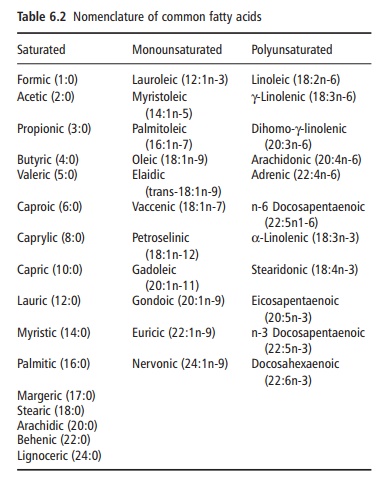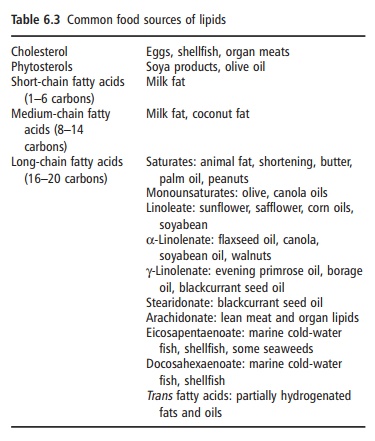Chapter: Introduction to Human Nutrition: Nutrition and Metabolism of Lipids
Digestion, absorption, and transport of dietary fat
Digestion, absorption, and
transport of dietary fat
The average daily intake of fat in a Western diet ranges between
50 and 100 g and provides between 35% and 40% of total energy. It consists
mainly of TAG, which forms the principal component of visible oils and fats,
and minor quantities of phospholipids and choles-terol esters (CEs). The
physical properties of dietary fat, such as their hardness at room temperature
(melting point) and subsequent metabolic properties once in the body, are
determined by the number of double bonds in their constituent fatty acids
(degree of saturation or unsaturation) and length of the fatty acid carbon
chain (see Tables 6.2 and 6.3). As men-tioned, fats that are solid at room
tem-perature tend to consist of long-chain saturated fats (>14 carbons, no double bonds), whereas oils consist of long-chain
unsaturated fats with several double bonds. It has become conventional to refer
to dietary fats as “lipids” once they have been absorbed into the body via the
small intestine, although it is not incor-rect to refer to dietary fat as
“dietary lipid.”


Related Topics